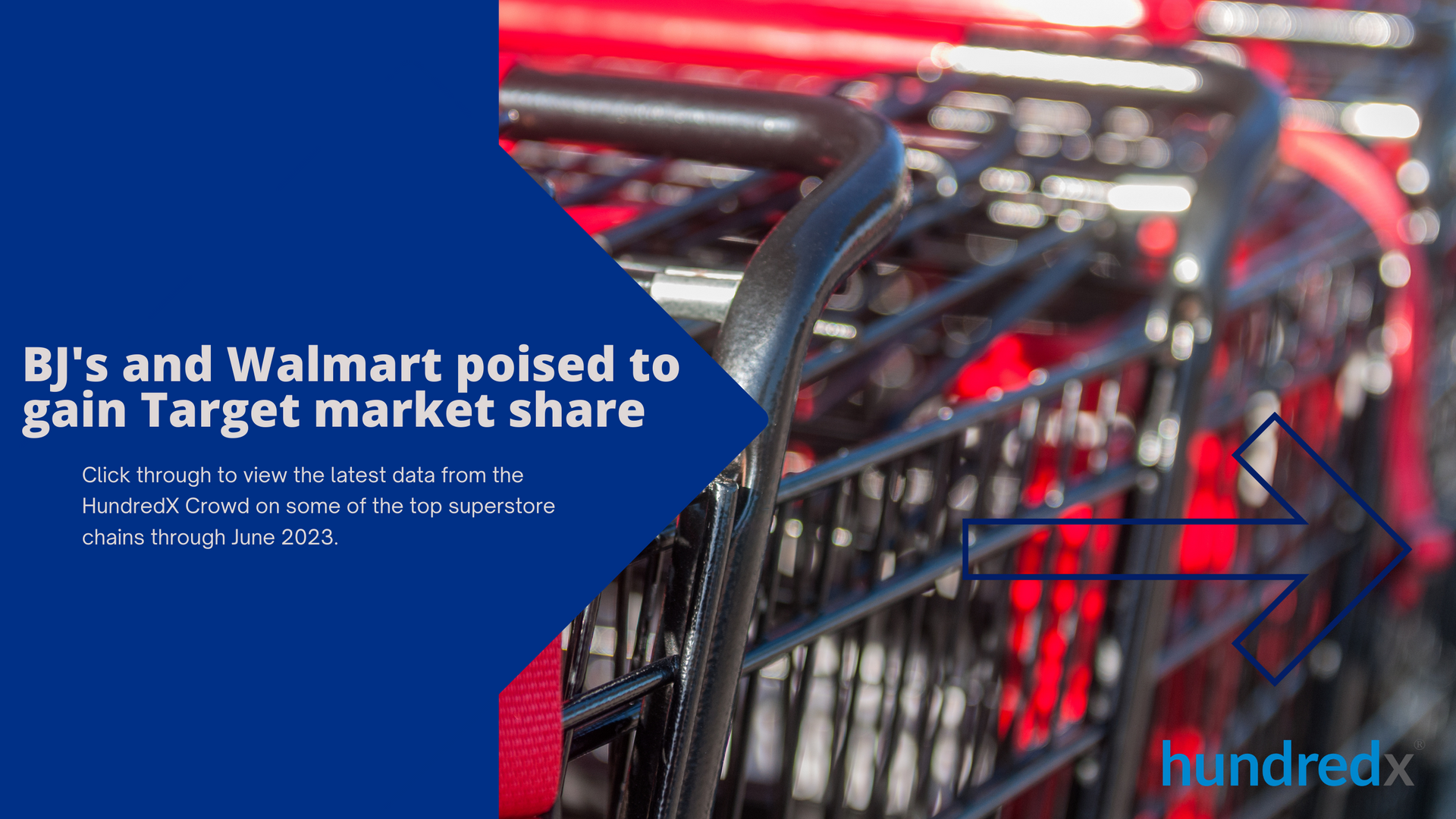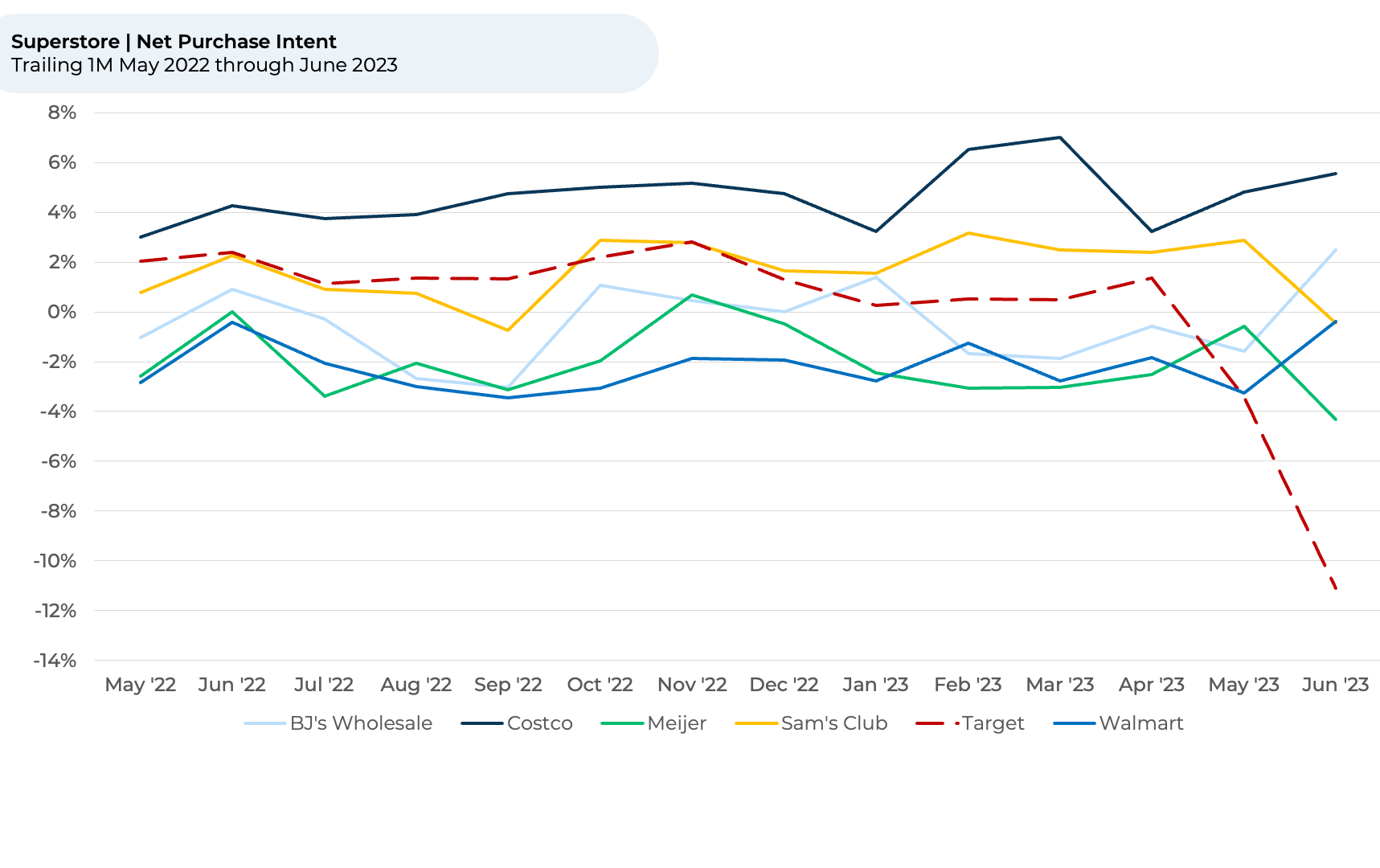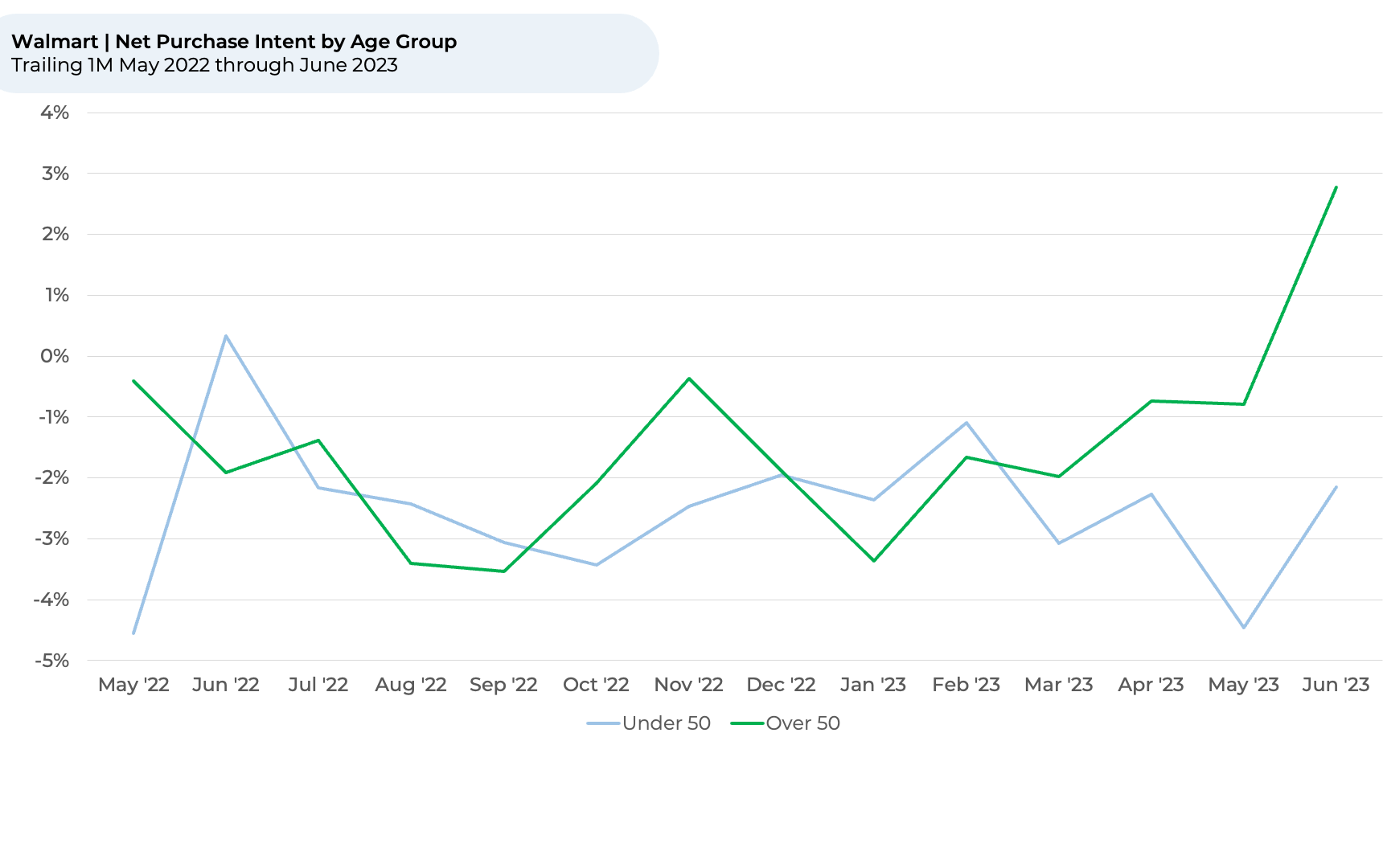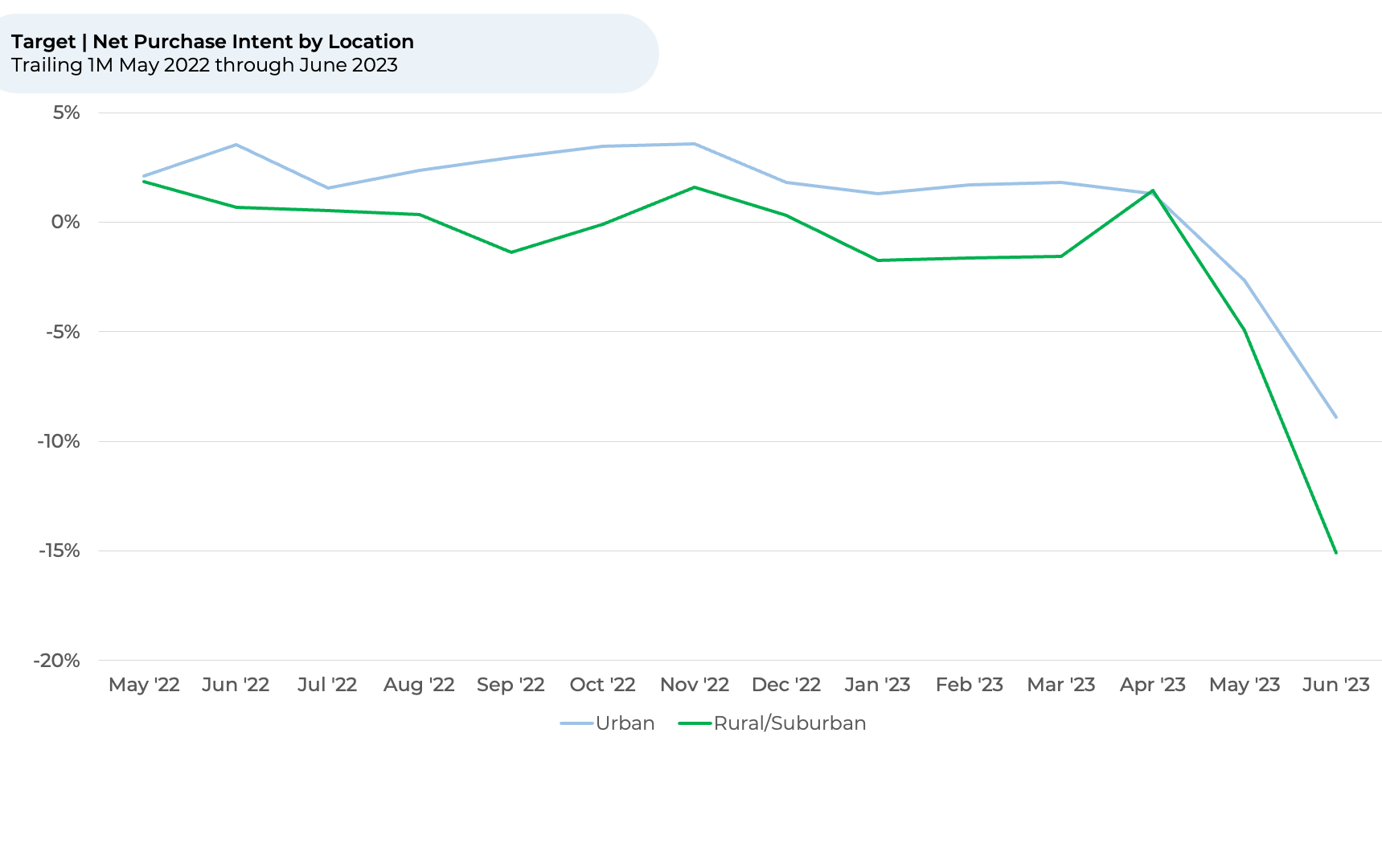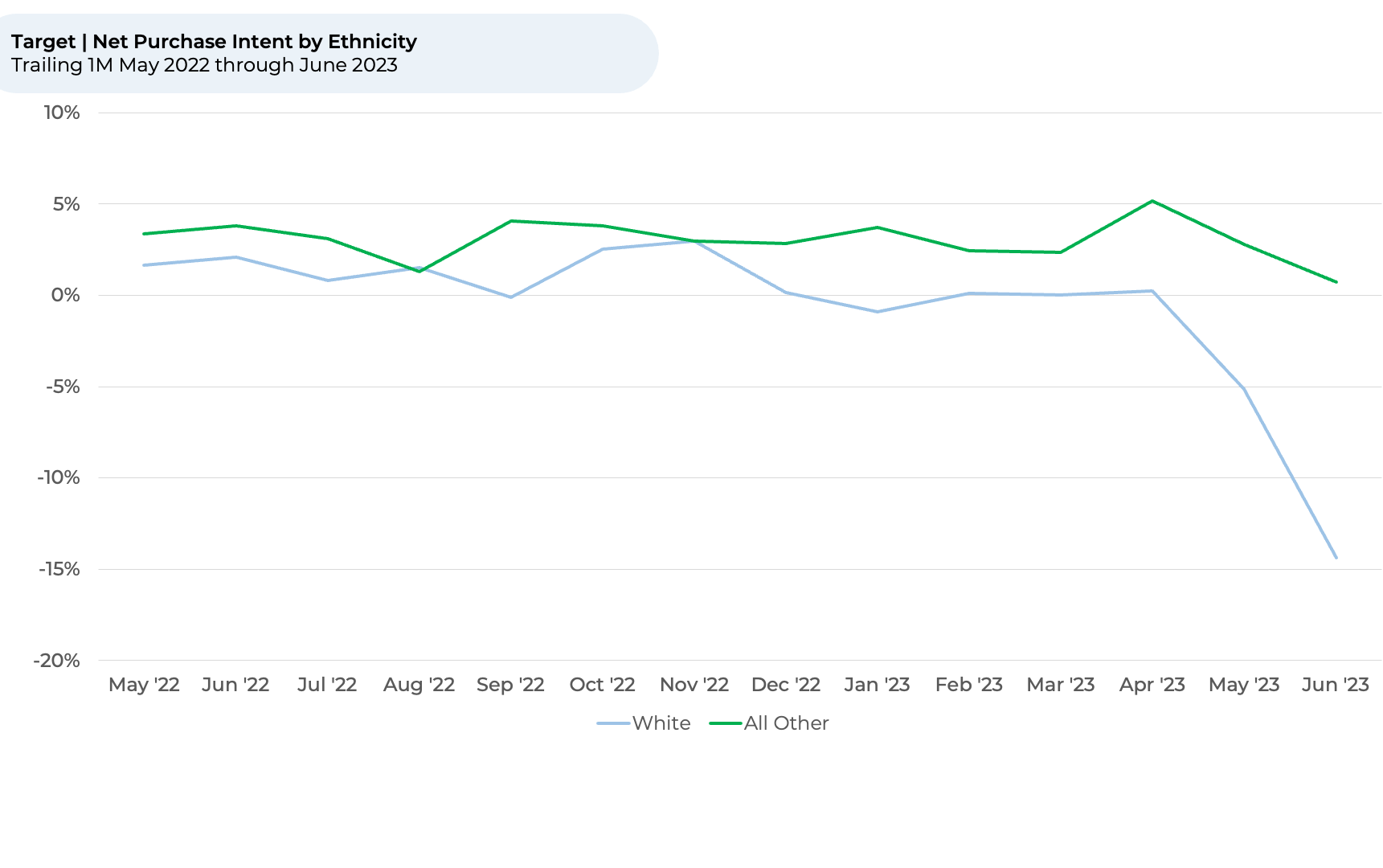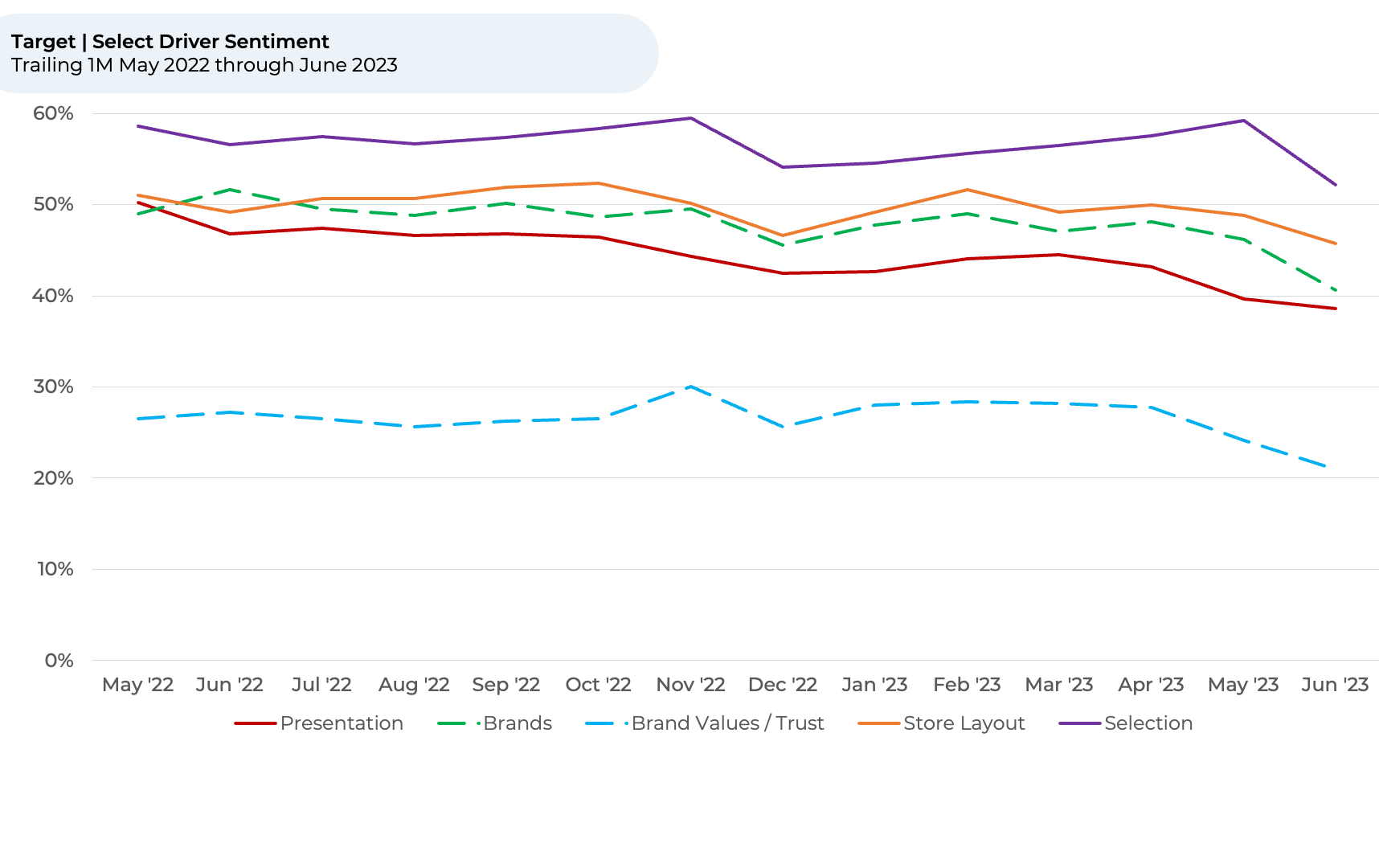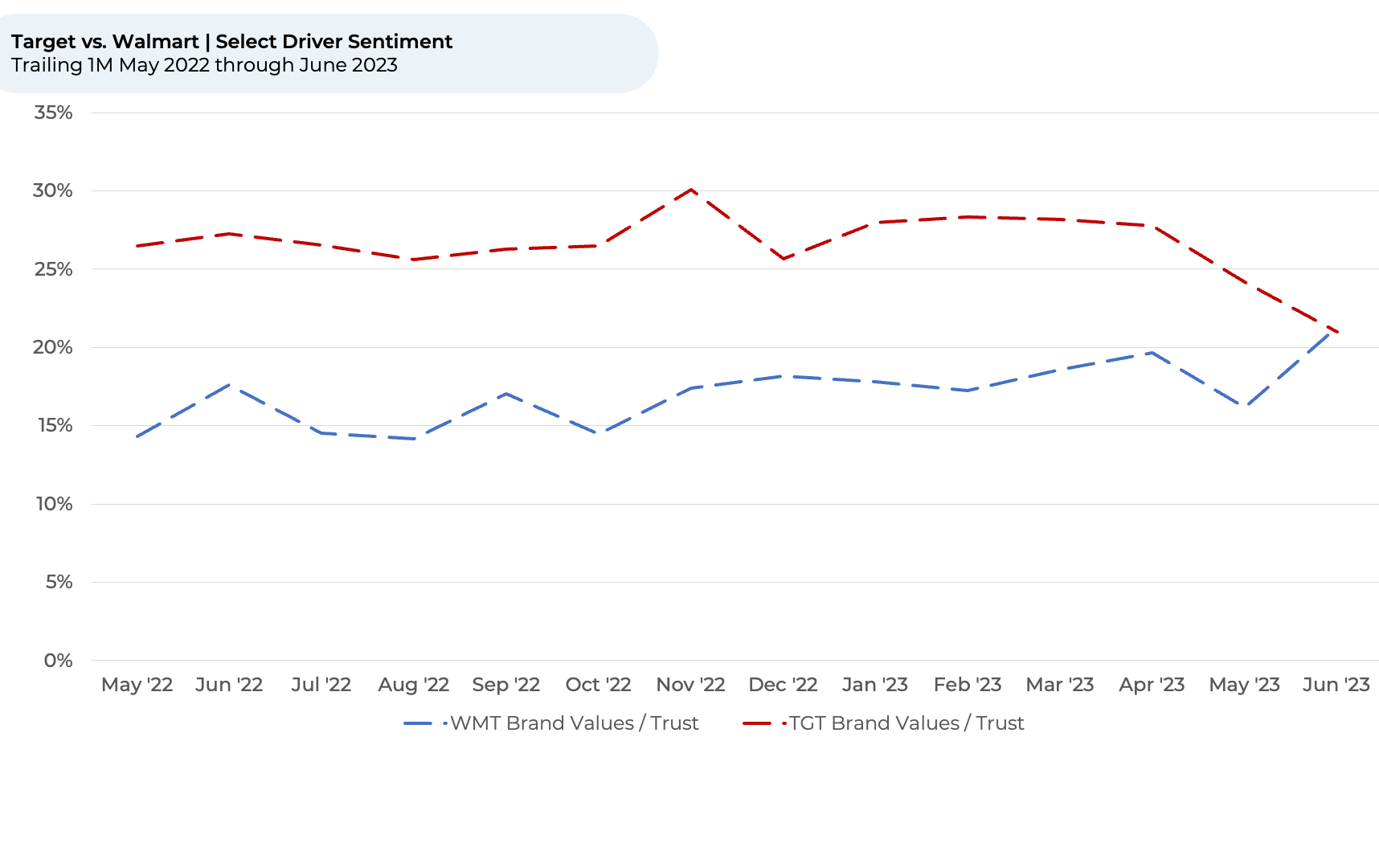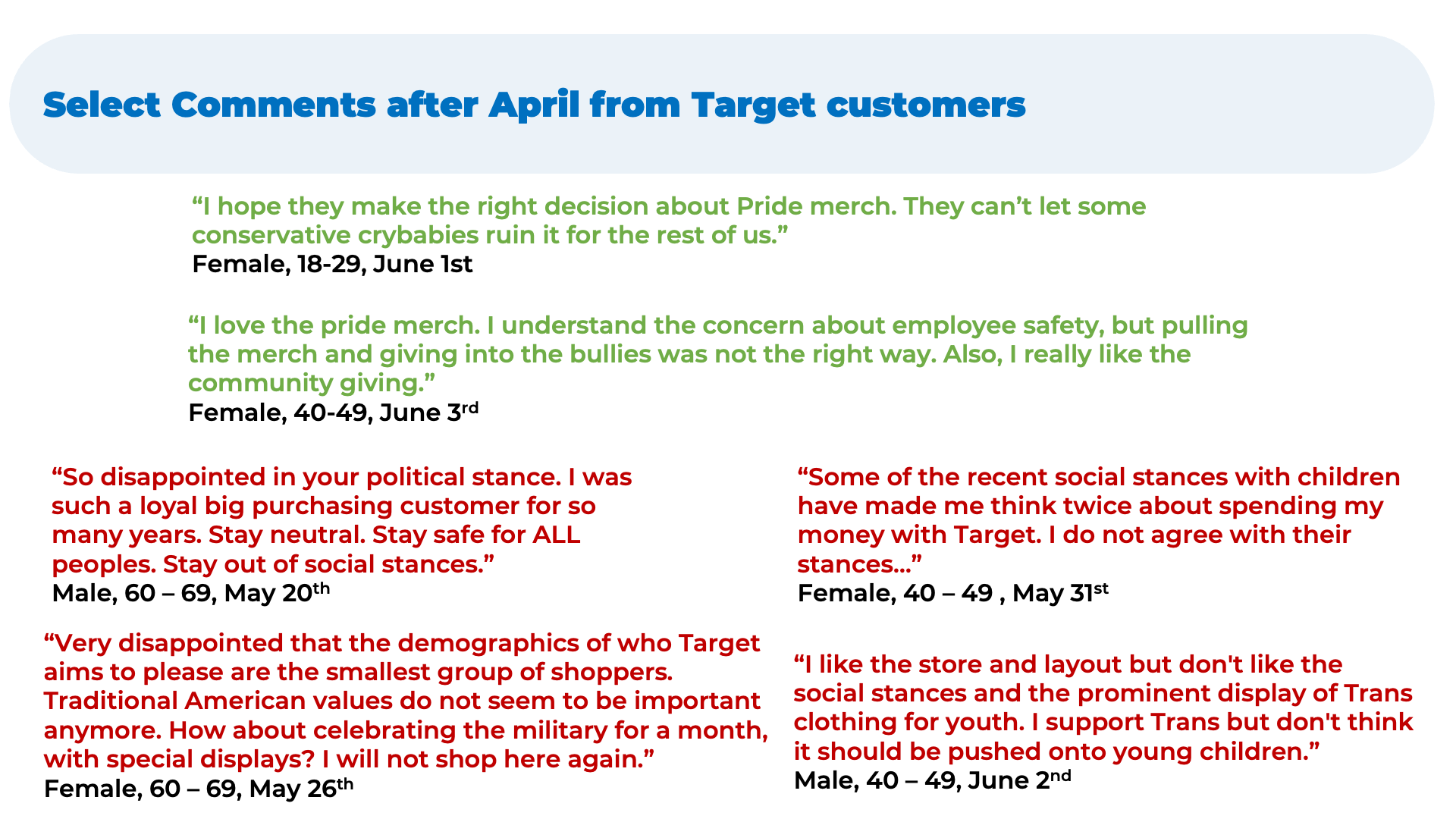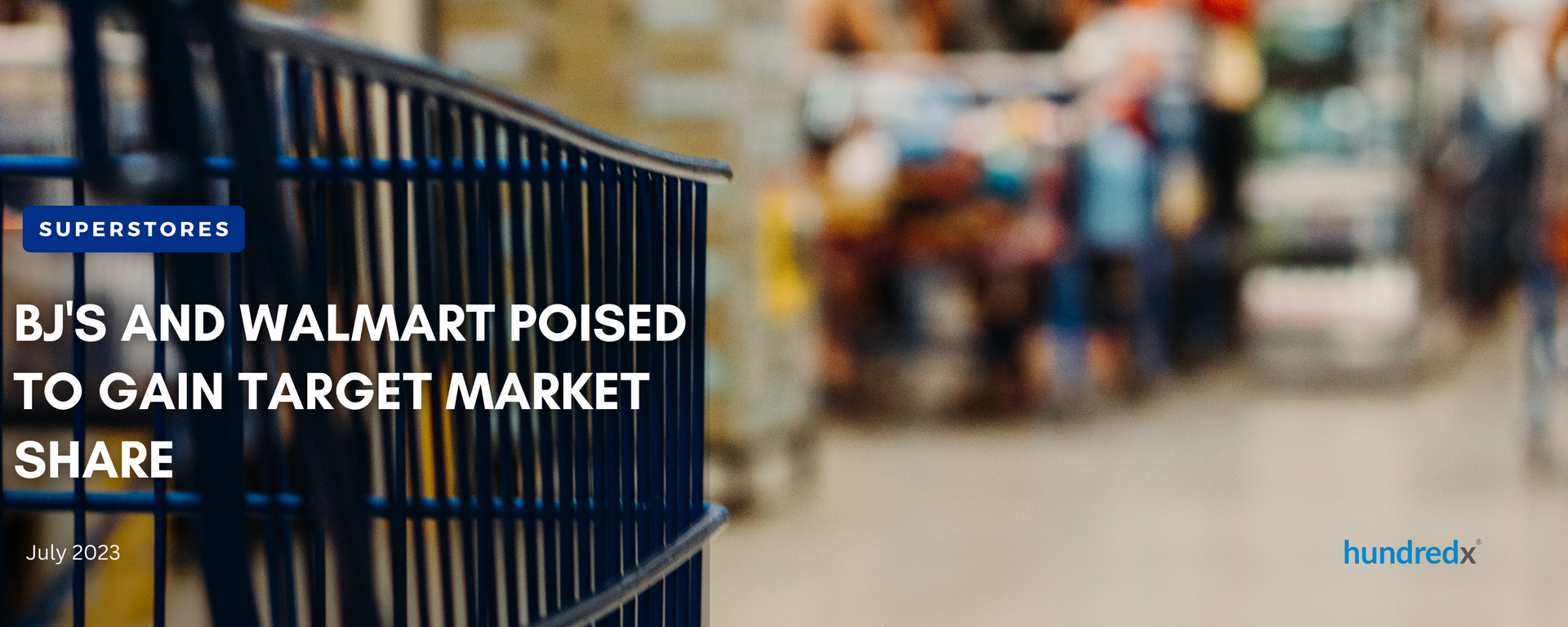
HundredX recently analyzed trends in customer sentiment for Target versus competitors through June 2023. The analysis draws on over 150,000 pieces of continuous, double-blind customer feedback across Superstores during the past year, including over 45,000 and 50,000 for Target and Walmart, respectively.
Key Takeaways:
- Future Demand Outlook: Target customer future purchase intent1,2 started to fall in May and has accelerated through June. Overall, net future spending intent has declined 13% from April through June (8% of which occurred in June).
- Walmart and BJ’s appear to be positioned to gain market share from the Target decline.
- Demographics: Target’s purchase intent declined across almost all demographics since the end of April. It fell the most for customers that are older (-13%), rural/suburban (-17%) and making more than $50K annually (-13%).
- Key Drivers: While Target's selection and presentation remain competitive strengths, sentiment towards the brands it carries and its brand values and trustworthiness have declined about 7% since April. Walmart’s Brand Values / Trust sentiment3 has exceeded Target’s for the first time in over a year.
- A significant portion of customer comments in May and June related to Target’s social/political stances. While numerous comments were positive, the majority were negative.
Discover HundredX insights into Superstore Retail Trends:
Please contact our team for a deeper look at HundredX's Superstore data, which includes more than 274,000 pieces of customer feedback across 8 superstore chains.
- All metrics presented, including Net Purchase (Purchase Intent) and Net Positive Percent / Sentiment are presented on a trailing one-month basis unless otherwise noted.
- Purchase Intent for superstores represents the percentage of customers who expect to spend more with that chain over the next 12 months, minus those that intend to spend less. We find businesses that see Purchase Intent trends gain versus the industry or peers have often seen revenue growth rates, margins and/or market share also improve versus peers.
- HundredX measures sentiment towards a driver of customer satisfaction as Net Positive Percent (NPP), which is the percentage of customers who view a factor as a positive (reason they liked the products, people, or experiences) minus the percentage who see the same factor as a negative.
Strategy Made Smarter
HundredX works with a variety of companies and their investors to answer some of the most important strategy questions in business:
- Where are customers "migrating"?
- What are they saying they will use more of in the next 12 months?
- What are the key drivers of their purchase decisions and financial outcomes?
Current clients see immediate benefits across multiple areas including strategy, finance, operations, pricing, investing, and marketing.
Our insights enable business leaders to define and identify specific drivers and decisions enabling them to grow their market share.
Please contact our team to learn more about which businesses across 75 industries are best positioned with customers and the decisions you can make to grow your brand’s market share.
####
HundredX is a mission-based data and insights provider. HundredX does not make investment recommendations. However, we believe in the wisdom of the crowd to inform the outlook for businesses and industries. For more info on specific drivers of customer satisfaction, other companies within 75+ other industries we cover, or if you'd like to learn more about using Data for Good, please reach out: https://hundredx.com/contact.

